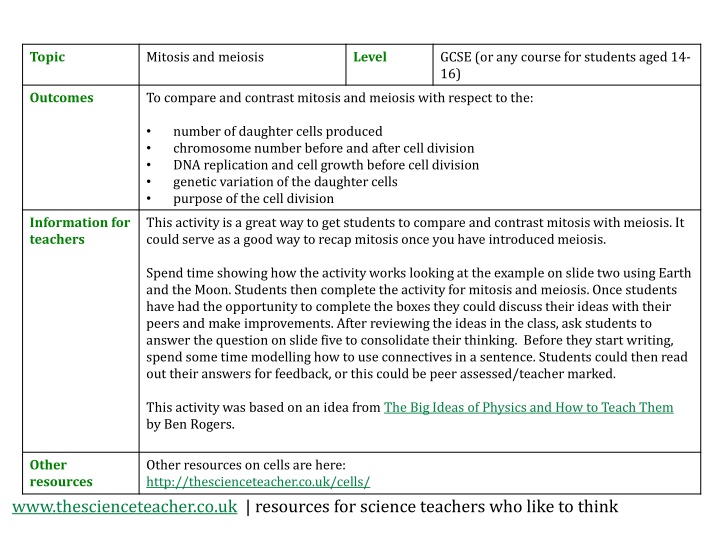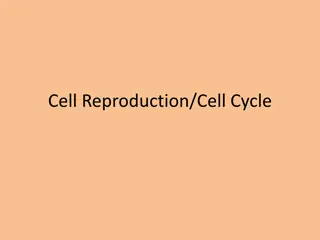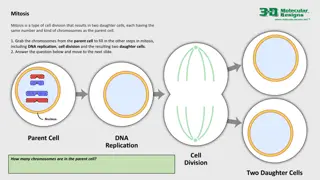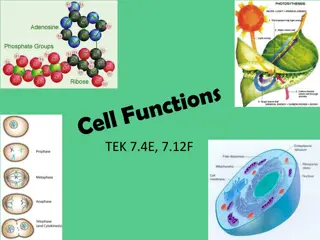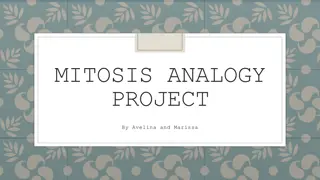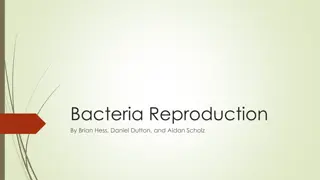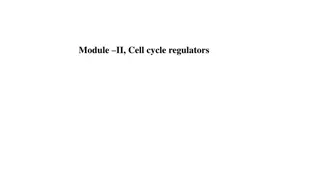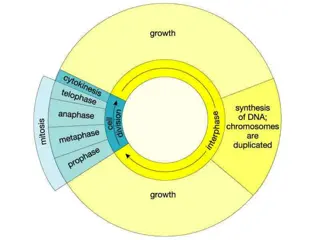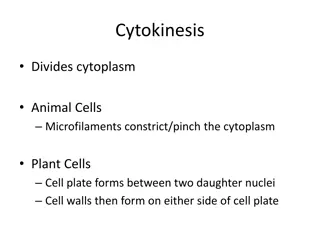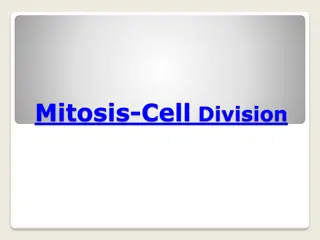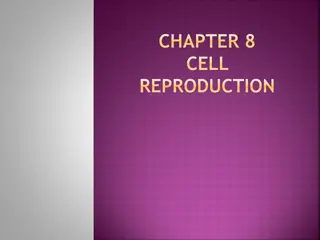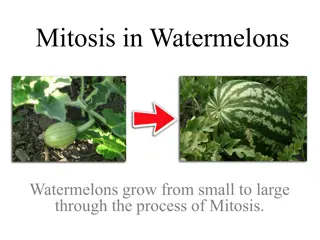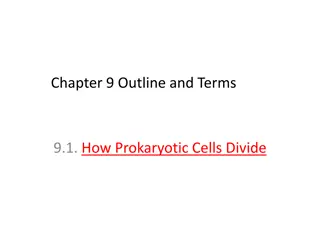Cell Cycle: Interphase, Mitosis, and Cytokinesis
The cell cycle is composed of crucial phases including interphase, mitosis, and cytokinesis, each playing a vital role in cell division and replication. Interphase encompasses G1, Synthesis (S), G2, and G0 stages, highlighting the preparation and growth phases. Mitosis, a form of nuclear division, leads to the creation of daughter cells with identical genetic material. Mitosis is further divided into Prophase, Metaphase, Anaphase, and Telophase, each essential for the orderly distribution of chromosomes. Dive into the intricate process of cell division through this detailed exploration of the cell cycle.
Download Presentation

Please find below an Image/Link to download the presentation.
The content on the website is provided AS IS for your information and personal use only. It may not be sold, licensed, or shared on other websites without obtaining consent from the author.If you encounter any issues during the download, it is possible that the publisher has removed the file from their server.
You are allowed to download the files provided on this website for personal or commercial use, subject to the condition that they are used lawfully. All files are the property of their respective owners.
The content on the website is provided AS IS for your information and personal use only. It may not be sold, licensed, or shared on other websites without obtaining consent from the author.
E N D
Presentation Transcript
Topic Mitosis and meiosis Level GCSE (or any course for students aged 14- 16) Outcomes To compare and contrast mitosis and meiosis with respect to the: number of daughter cells produced chromosome number before and after cell division DNA replication and cell growth before cell division genetic variation of the daughter cells purpose of the cell division Information for teachers This activity is a great way to get students to compare and contrast mitosis with meiosis. It could serve as a good way to recap mitosis once you have introduced meiosis. Spend time showing how the activity works looking at the example on slide two using Earth and the Moon. Students then complete the activity for mitosis and meiosis. Once students have had the opportunity to complete the boxes they could discuss their ideas with their peers and make improvements. After reviewing the ideas in the class, ask students to answer the question on slide five to consolidate their thinking. Before they start writing, spend some time modelling how to use connectives in a sentence. Students could then read out their answers for feedback, or this could be peer assessed/teacher marked. This activity was based on an idea from The Big Ideas of Physics and How to Teach Them by Ben Rogers. Other resources Other resources on cells are here: http://thescienceteacher.co.uk/cells/ www.thescienceteacher.co.uk | resources for science teachers who like to think
An example, comparing and contrasting Earth with the Moon. The Moon takes 27 days to orbit the Earth. Earth takes 365 days to orbit the Sun. Both have orbits and both rotate. The Moon has no atmosphere. They are both roughly spherical. the Moon Earth has an atmosphere. Earth Earth takes 24 hours to rotate on its axis. The Moon takes 27 days to rotate on its axis. Both have mountains and craters. Different Different Similar
Unique to meiosis Similar to both Unique to mitosis . Mitosis Meiosis . Similar Different Different
Unique to meiosis Similar to both Unique to mitosis Forms four different daughter cells with half the number of chromosomes as the parent cell. Forms two identical daughter cells with the same number of chromosomes as the parent cell. Before division DNA replicates (chromosomes copy) and cell growth happens. Used for growth and repair in multicellular organisms e.g. replacing red blood cells. Number of organelles increases before division e.g. mitochondria. Used to produce gametes in the sex organs e.g. testes or anthers. Mitosis Meiosis Two divisions occur. Daughter cells are genetically different from each other. One division occurs. Daughter cells are identical (assuming no mutation). Mutations can occur. Different Different Similar
Compare and contrast mitosis with meiosis. In your answer refer to: - the purpose of each type of cell division. - the chromosome number of the daughter cells compared to the parent cell. - the genetic variation of the daughter cells. - what happens inside the cell before mitosis and meiosis takes place. Helpful connectives: whereas, similarly, however, but
